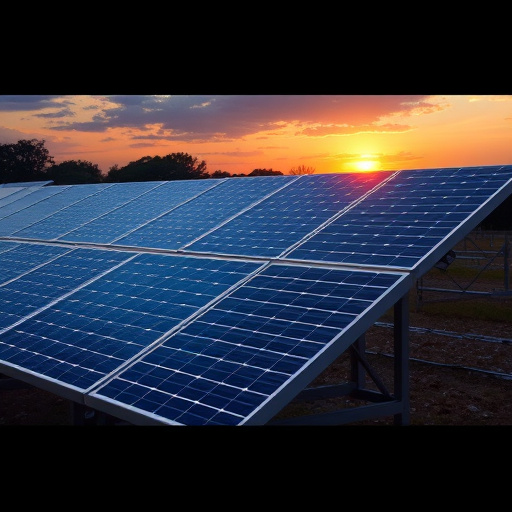Photovoltaic (PV) technology, utilizing semiconductors like silicon cells, has revolutionary implications for solar energy production, offering an efficient, flexible, and sustainable alternative to fossil fuels. PV systems convert sunlight into clean electricity through a process involving electron flow in cells, enabling widespread use from large-scale farms to residential rooftops. This technology addresses climate change by reducing carbon emissions, with advancements in efficiency, affordability, and accessibility driving its global adoption as a key component of the energy transition towards a sustainable future.
“Unleash the power of the sun with Photovoltaic (PV) technology, a game-changer in the global energy landscape. This article explores the remarkable process of converting sunlight into electricity through PV cells, offering an in-depth understanding of this renewable resource. From residential to commercial applications, solar PV systems are transforming the way we power our world. We dispel common myths and highlight environmental benefits, while peering into the future prospects of PV as a key driver in the global energy transition towards sustainability.”
- Understanding Photovoltaic (PV) Technology: Unlocking Solar Energy
- How PV Cells Convert Sunlight to Electricity
- Advantages of Solar PV Systems for Homes and Businesses
- Dispersing Common Misconceptions About Solar Power
- The Environmental Impact of PV Technology
- Future Prospects of PV in the Global Energy Transition
Understanding Photovoltaic (PV) Technology: Unlocking Solar Energy
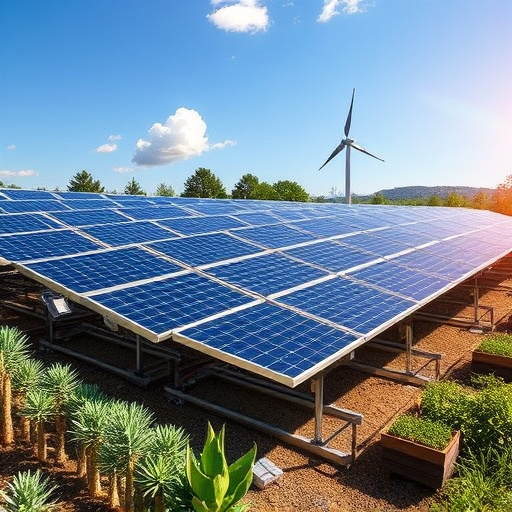
Photovoltaic (PV) technology is a game-changer in the realm of renewable energy, allowing us to harness the power of sunlight and convert it into electricity. This innovative process has revolutionized how we think about energy production, offering a clean and sustainable alternative to traditional fossil fuels. At its core, PV technology relies on semiconductors, typically silicon-based cells, which absorb photons from sunlight and generate direct current (DC) electricity.
When sunlight hits these PV cells, it initiates a series of events that unlock the potential of solar energy. The absorbed light creates an electric field within the cell, leading to the flow of electrons and the production of electricity. This technology is not only efficient but also flexible, with applications ranging from large-scale solar farms to rooftop panels on residential homes. By understanding and embracing PV technology, we take a significant step towards a more sustainable future, reducing our reliance on finite resources and mitigating the impact of climate change.
How PV Cells Convert Sunlight to Electricity
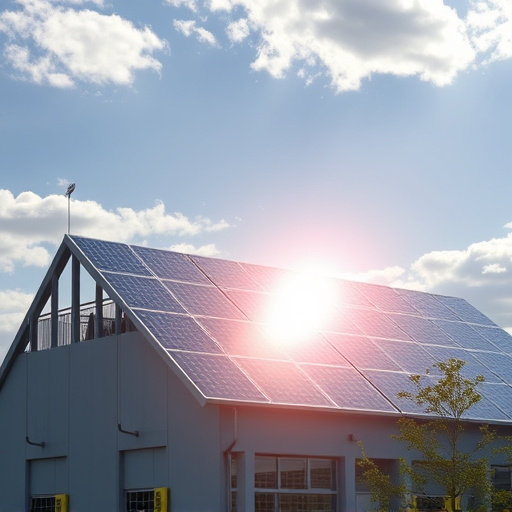
Photovoltaic (PV) cells are the heart of solar energy technology, harnessing the power of sunlight to generate electricity. This process begins when photons from the sun strike the cell’s surface, exciting electrons within the semiconductor material—typically silicon—to create a flow of electrical current. The unique structure of PV cells allows for this efficient conversion, with layers of different materials engineered to separate and capture the generated charge carriers, resulting in direct current (DC) electricity.
This DC power is then transformed into alternating current (AC) by inverters, making it compatible with standard electrical grids and appliances. The entire process showcases the remarkable ability of PV technology to convert a renewable, abundant energy source—sunlight—into a usable form, contributing significantly to sustainable and clean energy practices.
Advantages of Solar PV Systems for Homes and Businesses
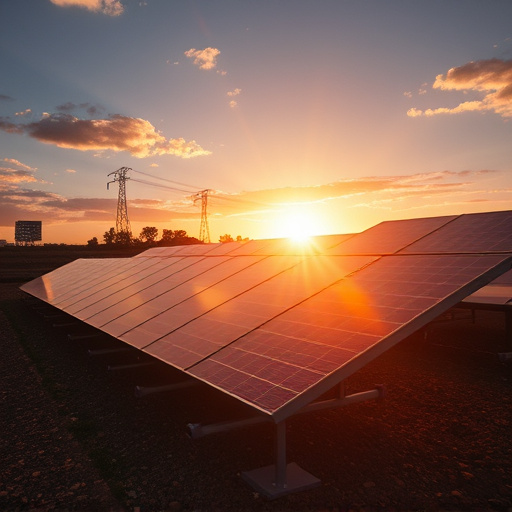
Solar PV systems offer numerous advantages for both homes and businesses, making them a growing trend in the adoption of renewable energy. One of the key benefits is their ability to generate clean, sustainable electricity directly from sunlight, significantly reducing carbon footprints. This technology is particularly appealing for residential properties as it provides long-term cost savings on energy bills, with minimal maintenance requirements.
For businesses, solar PV systems can enhance operational efficiency and sustainability goals. By harnessing solar energy, companies can reduce their reliance on traditional power sources, leading to potential cost reductions and improved brand image. Moreover, surplus electricity generated can be fed back into the grid, providing additional revenue streams, making it a smart investment for forward-thinking businesses.
Dispersing Common Misconceptions About Solar Power
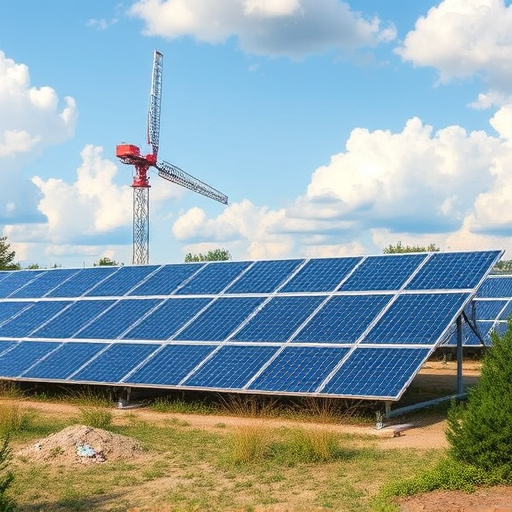
One of the biggest hurdles in the widespread adoption of solar energy is the persistent confusion and misconceptions surrounding its effectiveness and capabilities. Many people still believe that solar power is only a fleeting trend or an expensive luxury, but these views could not be further from the truth. Solar technology has advanced significantly over the years, making it a reliable and cost-efficient source of renewable energy.
A common misconception is that solar panels are inefficient during cloudy or cold weather. However, modern PV systems are designed to absorb sunlight even in low-light conditions, thanks to innovative materials and designs. Additionally, many regions experience ample sunlight throughout the year, making solar energy a viable option for diverse climates. By debunking these myths, we can encourage more people and businesses to consider solar power as a sustainable and powerful alternative to conventional electricity sources.
The Environmental Impact of PV Technology
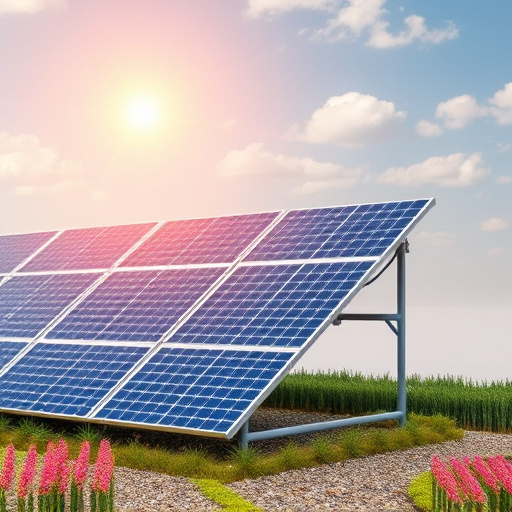
Photovoltaic (PV) technology has a minimal environmental impact compared to traditional energy sources. Unlike fossil fuels, which release greenhouse gases and contribute to climate change, PV systems generate electricity cleanly and efficiently from sunlight. The primary environmental considerations with PV involve the manufacturing and disposal of panels, but these impacts are relatively small when compared to the benefits of reducing carbon emissions.
Moreover, the widespread adoption of solar energy can lead to a more sustainable future. As the technology continues to improve and become more accessible, it has the potential to significantly reduce our reliance on non-renewable resources, decreasing pollution and preserving natural habitats. This shift towards renewable energy sources like PV is a crucial step in mitigating environmental degradation and ensuring a healthier planet for future generations.
Future Prospects of PV in the Global Energy Transition

The global energy transition is accelerating, with renewable sources like solar energy playing a pivotal role in reducing carbon emissions and combating climate change. Photovoltaic (PV) technology, which converts sunlight directly into electricity using semiconductor materials, is at the forefront of this movement. As research and development continue to advance, PV systems are becoming increasingly efficient, affordable, and accessible. The integration of these technologies into existing grids and the widespread adoption by both residential and commercial sectors hold immense promise for a more sustainable future.
Looking ahead, the prospects for PV in the global energy transition are promising. Advancements in material science, manufacturing processes, and system design are driving down costs and improving performance. The potential for floating solar farms, building-integrated photovoltaics (BIPV), and innovative storage solutions further expand the capabilities of solar energy. As governments worldwide implement policies to incentivize renewable energy adoption and as public awareness grows about climate change, PV technology is poised to play an even more significant role in shaping a cleaner, greener world.
Photovoltaic (PV) technology stands as a powerful tool in our transition towards sustainable energy, offering a clean and renewable alternative with vast potential. By harnessing the sun’s energy, PV systems are transforming homes and businesses, reducing reliance on fossil fuels. As we navigate the global energy crisis, embracing solar power is not just an option but a necessary step towards a greener future. With continuous advancements and decreasing costs, the benefits of solar energy are becoming increasingly accessible, making it a promising solution for our energy needs.
